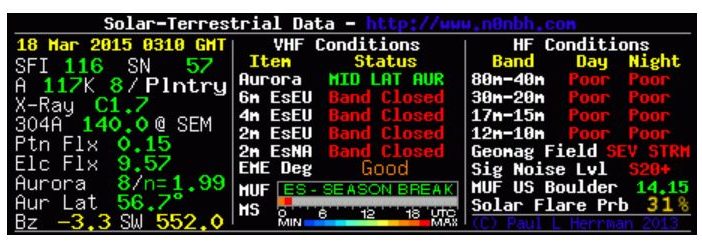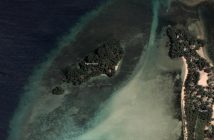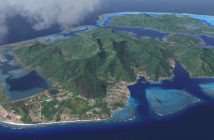6M Propagation Modes by K1HTV, Rich Zwirko (Editor’s note: The following article appeared in the September Potomac Valley Radio Club Newsletter and is being republished here thanks to Rich.) ______________________________________________________________________
Now that we are past the sunspot max, the propagation modes that we are most likely to experience on 50 MHz are Sporadic E (Es), Aurora (AU), Trans Equatorial (TEP), Short Path Summer Solstice Propagation (SSSP) and Tropo.
Es can occur any time of the year but you will see a peak in number of openings between the months of May through August. If the ionized patches line up properly, 2, 3 or 4 hops can make for some FB DX. I’ve worked out to the west coast on double hops as early as 9AM EDT and as late as our local midnight. I once worked KH6 on 6M at our local midnight on 4 hops. If there are going to be any European DX multi-hop openings they can occur for us as early as 8AM but usually don’t start until after 10AM. I’ve worked Western Europe as late as 7PM EDT, but that is unusual.
Keep an eye on DXMAPS.COM and click on the MAP, North America and MUF tabs to see where the maximum usable frequency is above 50 MHz If it occurs out 500-750 miles away from here, it can be a midpoint for contacts in the same direction and at the same distance from the midpoint to the distant station. When the MUF increases to above 144 MHz look out for Es on that band. I’ve worked out to as far as Texas and Colorado on 2M from my old MD QTH and out to all over W0 land from here in VA. These opening are usually very short, lasting from a few minutes to an hour. More info of sporadic E propagation can be found at http://www.electronics-radio.com/articles/antennas-propagation/ionospheric/sporadic-e-es.php.
Aurora can only occur when there is a magnetic storm caused by a major solar eruption or from the plasma, which can erupt from a geo- effective (one facing us) solar hole. When a mag storm does occur and it is intense enough, you can bounce 6M signals off of it. The direction can vary but is usually between NNE to NNW and can vary as the aurora is in effect. On super auroras, I’ve worked stations out west with the beam NW. Read more about this mode at http://www.electronics-radio.com/articles/ham_radio/amateur-propagation/auroral-propagation.php.
TEP (Trans-Equatorial Propagation) usually occurs around the Vernal and Autumnal equinoxes. From this area, when it occurs on 6M you will be able to work stations in mid to deep South America. More on this mode at http://www.amateur-radio-wiki.net/index.php?title=Trans-Equatorial_Propagation and also at http://www.electronics-radio.com/articles/antennas-propagation/ionospheric/transequatorial-propagation.php.
SSSP (Short Path Summer Solstice Propagation) is a rare propagation, which can result in very long haul (JA-USA) skip. It is actually a combination of Es linked, which some kind of chordal long hop in the middle. It usually centers on the first part of July. Read more about
SSSP at http://www.ha5hrk.hu/files/SSSP_JE1BMJ.pdf.
Tropo is much rarer on 6M vs the higher bands (144,222,432 MHZ) but at times you can see extended ground wave out 200-300 miles.




